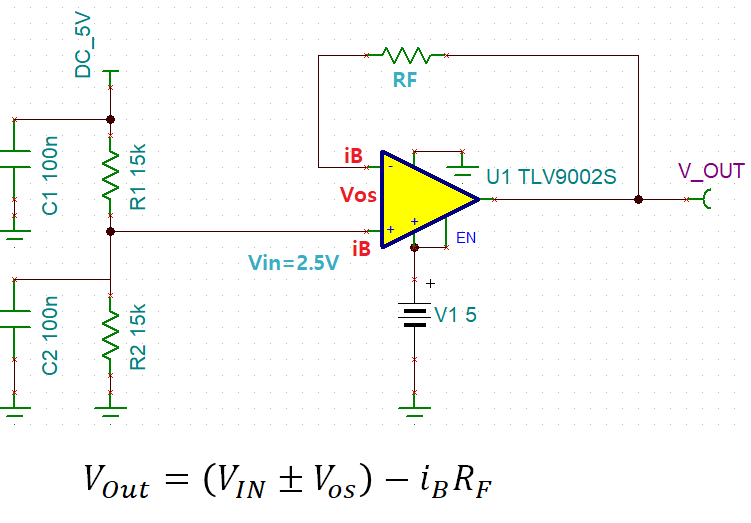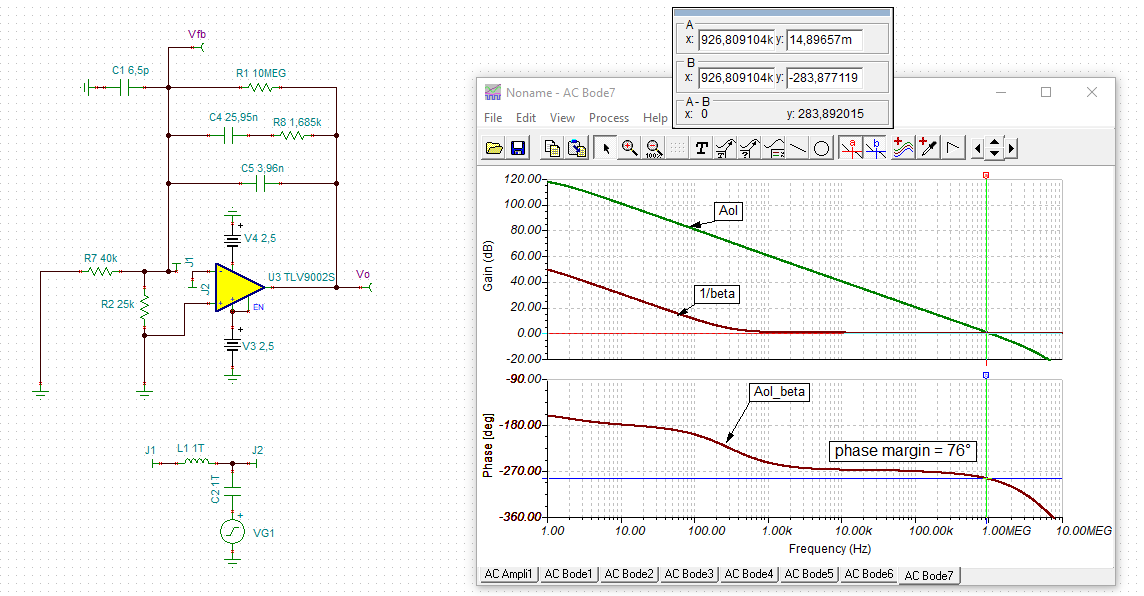Other Parts Discussed in Thread: LM358, , LMH6643
Dear TI Team,
The previous questions have been resolved, but I would like to ask a few more questions. Can I ask few questions?
1.) case1. I thought a few reasons why I used the detailed value of 4.53k in. There was a role of phase margin correction. (link:https://e2e.ti.com/blogs_/archives/b/precisionhub/archive/2014/07/15/resistors-in-the-feedback-of-a-buffer-ask-why)
Simulation can determine zero plot according to OP-AMP Common Capacitance, Differential Capacitance, Band width and Feedback resistance.
As a result, it was confirmed that the phase margin was also adjustable.

The question is, the reference voltage is 2.5V DC, but I am wondering if the phase margin value can greatly affect the output value.
2) case1. I think the expression for V_out is as follows.
Here, although it is usually V_out ≒ V_ref, it was thought that some output fluctuation may occur due to the offset voltage and bias current characteristics of the OP-AMP.
feedback Resistance is V_ref = 2.5V, I think resistance tuning for accurate output correction. i wonder your opinion.
3). case2. I also think that the output is saturated because it is a DC comparator that outputs high or low by comparing two inputs.
If so, is the DC comparator as above unable to measure gain and phase margin?
If there is a way to measure it, I would appreciate it if you let me know in detail.
4. )I'm going to show you the integral circuit.
At case2. I think if there is a big difference from the comparator, the feedback R value and the small Feedback cap size.
The attached integral circuit is capable of gain and phase margin simulation. Because the output method is different (integral output and output based on comparison of two inputs), is the integrator capable of margin simulation and comparator impossible?
7343.DRIVE_OUT_LM358(PhaseGain)_DC.TSC
5. If the DC comparator cannot check the gain and phase margin, is there any way to know the stability and response speed of the circuit?
There are a lot of questions, but I would be grateful if you could answer them.




